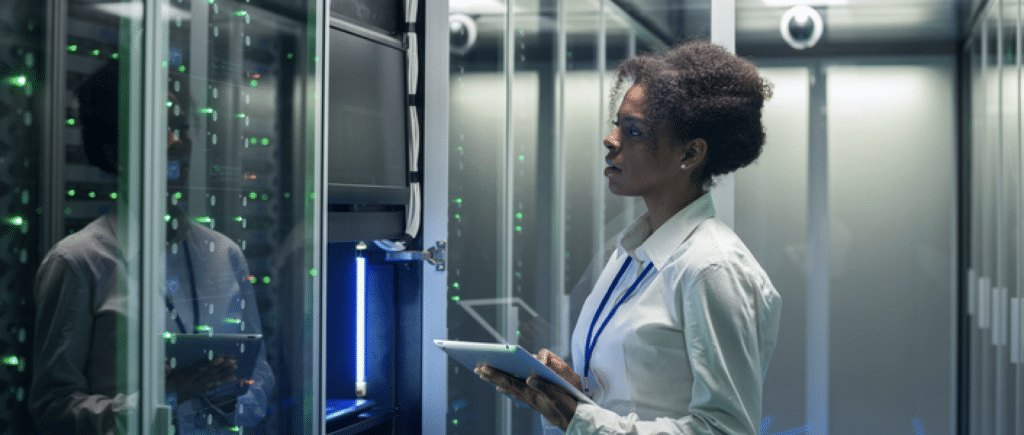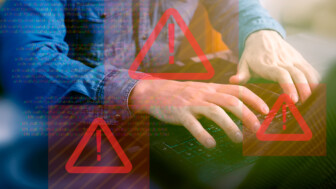1H 2020 Cybersecurity Threats: An Overview of Trends
Though the first half of 2020 will almost certainly be known for the COVID-19 pandemic, the changes that were brought about in how we work and live have had drastic results in how cybersecurity is handled. Suddenly, millions of children were at home during the workday and millions of workers were working from home, creating a wide range of challenges for the first half of the year. Though this lead to a drastic change in how IT resources were being managed, these changes are leading to new trends as we ride out the pandemic with mixed in-person and distance-learning options for students and businesses that are keeping some employees at home to help do their part in preventing the pandemic from taking off again. There’s solid cause for concerns, with the changes in IT configuration and architecture leading to a wide range of potential issues for businesses, from ransomware to a data breach. Here’s a look at some key takeaways from the first half of the year, as well as trends that we can expect to see continue far into the future.

1H 2020 Cybersecurity Threats: An Overview of Trends
Spreading almost as fast as the virus, COVID-19-based scams, and lures became common, while internet browsers became the top delivery web-based malware that is commonly used in phishing attacks. Because of the number of people working from home, there was a strong drop in corporate web traffic. The combination of these two significant changes leads to a number of changes to improve browser security. With the average cost for a malware attack averaging $2.6 million, these vulnerabilities can cause serious problems for companies already facing a tough economy.
But that wasn’t the only change caused by the drastic increase in work-from-home employees. Consumer-grade routers and IoT devices provided a range of access points for hackers to exploit in accessing corporate data. This process leads to a number of companies sending out IT personnel to tighten down security for their employees who were based from home for the foreseeable future, making it more difficult for cybercriminals to take advantage of “the new normal”. On average, the cost of a ransomware attack is $133,000. Who is going to take care of that expense to get your company’s data secured and operational again?
Though 2020 has been a difficult year to begin with, it’s not over yet. It’s currently on pace to shatter existing records for a total disclosed IT vulnerabilities. However, despite this issue, this year has also had the lowest ratio of vulnerabilities that are being actively exploited in the wild. However, there has also been a drastic change in how attacks are being carried out. Here’s a quick look at some of the top attach types and how they’ve shifted in the first half of 2020.
Malware Attacks
The trends found in how malware is distributed showcases shifting priorities for cybercriminals. As has been the top priority for distribution for many years, 2020 started out with HTML and phishing techniques at the top of the charts. However, over the course of the first half of the year, CVE-2017-11882 made rapid gains as poorly-secured home networks saw more business activity. Taking advantage of a Microsoft Office memory corruption issue, you’ll want to make sure at-home workers are properly securing their systems.
Botnet Vulnerabilities
Botnets are particularly pernicious because of the activity they can undertake using your system’s resources, acting as part of a virtual zombie computer apocalypse in which hackers can use your digital infrastructure to launch attacks on other systems, so eliminating them from your system helps defend the entire community. In botnet activity, the end of April and beginning of May saw a rapid and very significant change in the top botnet systems that were being deployed. Gh0st.Rat had previously topped the market significantly, with regular gains, but saw a decrease of about 8% as Mirai saw a jump from its position at about 58% of the market to reach a share in the high 80s.
Ransomware Growth
Ransomware capped off a busy first half of 2020 in which enterprise was often the focus with an attack that shut down the production of a major manufacturer. As the world was facing a range of potential issues and solutions to the COVID-19 epidemic, it became entirely too tempting for many employees around the world to click on links claiming to deal with COVID-19 topics, but actually installed ransomware onto digital assets. This is part of a trend that has become popular this year modeling software-as-a-service, focusing on creating ransomware-as-a-service for cybercriminal organizations.
The exploitation of Changes in IT Structure
Fortunately, many of the exploitation and vulnerabilities that have shown up this year have been caught before they could be taken advantage of in the wild. This is partially due to better computing power and capabilities for vulnerability testing, allowing tech companies to find more vulnerabilities earlier in the overall development and deployment process. However, it’s still of the utmost importance that your company stay on top of any potential vulnerabilities and adopt a multi-faceted, multi-layered approach to how your network and overall digital security is maintained for your business’ IT assets.
Though the first half of 2020 has been difficult, we can hope the second half becomes easier as working from home becomes more commonplace, and standardized systems and setups are deployed. If your IT department has come under fire this year due to all of the changes in IT structure, vulnerability because of employees using less-secure home networks or similar areas of concern, Kraft Technology Group can help. Our experienced team can help you tighten up your company’s IT assets, set up secure home networks for your employees who are working from home, or any number of other concerns that your company may be facing. Please feel free to reach out today with any questions, for more information or to set up a consultation with one of our experienced IT professionals.





